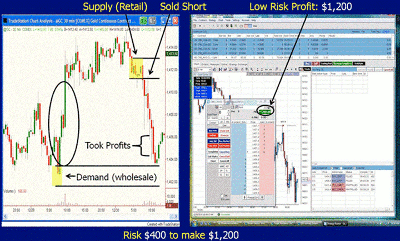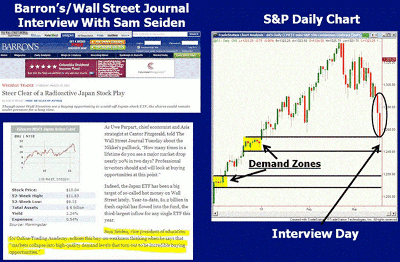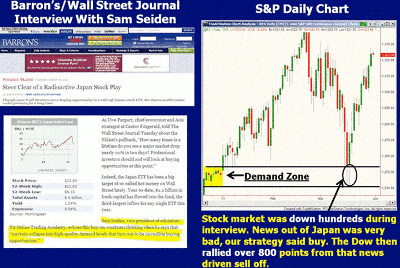It’s easy to overcomplicate things when trading, but getting back to the basics—like price and supply and demand—makes it easier to identify good set-ups and confidently execute more winning trades.
I was trading the other day and getting ready for a Webinar where I was going to do some live forex trading for a group based in Europe. I entered the Webinar about 30 minutes early and noticed there was a speaker before me going over the last few minutes of his piece.
He was giving his analysis on the euro, and it was very deep analysis. He went over six factors that made the trading opportunity in the euro that day compelling, from his point of view.
That made me think; I realized when it comes down to identifying the highest-quality trading opportunities/set-ups for me, I focus on two things only, and if they are present, I take the trade. Everything else is secondary. These two things are:
- The quality of the supply or demand level itself. This tells me where price will turn
- The profit margin. This tells me where price will go
If both of these factors are present in a trade, I typically look at nothing else and consider nothing else.
Let's look at a recent trade example:
The two things that make this trade so attractive prior to entry—and make it work out so well after entry—are the presence of a quality demand level and a clear profit margin.
First, notice the upper-yellow shaded area on the chart. This represents a quality supply level because price declined so quickly from it. This means willing supply greatly exceeds willing demand at that level.
Second, notice the big circled area on the chart. This price action represents what is below the area of supply on the price ladder.
Inside that circled area, there is nothing that suggests any strong demand. There is just a rally in price with no basing, meaning as fast as price rallied in that circled area, I would expect it to decline at the same rate the next time it was in that price range.
In other words, once price rallied back to that supply level after the initial decline, it would likely fall fast through to the demand below, and that is exactly what happened.
By focusing on these two important pieces of information, I am able to determine everything I just mentioned before I take the trade, which is what allowed me the low-risk profit on this trade.
Again, the key factors were the quality supply level to short against and the quality profit margin below that supply. If you were on a trade desk—like I was on the floor of the Chicago Mercantile Exchange—you would see a big stack of sell orders at that supply level and no significant buy orders until many price points lower. I am simply sharing with you what that picture looks like on a price chart so you can benefit as well.
NEXT: An "Incredible" Recent Buying Opportunity
|pagebreak|A couple months back, we all experienced the very unfortunate Japan disaster. On the 15th of that month, right at the height of the tragedy, Barron's/The Wall Street Journal called me and asked me what I thought would happen to the global stock markets. Prices around the world were collapsing, and they wanted to know if I thought this was the start of a larger decline in price.
Below is what the daily chart of the S&P looked like during the interview.
While the news was very real and very awful, the trend was down, and everyone on TV was calling for lower stock market prices, I simply focused on the two items I am writing to you about today.
First, price had declined to a quality demand level. Second, there was a clear profit margin to the upside when you focus on the circled area on the chart. So, even though the trend was down, the books tell us to only sell in downtrends, and the news was very real and very bad, my analysis suggested we had a very high-quality buying opportunity in front of us.
Price proceeded to rally strongly from that demand level and surged higher through that profit margin and beyond.
Trading and investing can become the most complicated task you will ever face if you let it. Between all the schools of thought when it comes to conventional technical analysis, and all the news and fundamental analysis to be done, this can be more than a full-time job.
What I am suggesting is that you don't have to really focus on any of those items at all. Instead, focus on how you make money buying and selling anything and apply the principles you already do well to the trading and investing markets. This should drastically simplify your analysis and offer you consistently low-risk, high-reward, and high-probability trading and investing opportunities.
By Sam Seiden, instructor, Online Trading Academy
























